I have an embarrassing confession to make. I have used Nosler products – ammunition, brass and bullets – for 25 years. But somehow, until 2018, I did not know that Nosler built rifles. When I found out that they had been selling rifles since 2005, I contacted Zach Waterman, Nosler’s Public Relations Manager about reviewing a rifle designed for deer hunting. Zach sent me an Model 48 Heritage rifle chambered for 30 Nosler.
Fast forward to the present and, including the rifle described in this review, I have handled three Nosler guns. The first two were both Model 48 Heritage rifles. The current review describes my findings with the Nosler Model 48 Mountain Carbon rifle, chambered in 26 Nosler.

Released in 2019, the Model 48 Mountain Carbon was designed to be an ultra-lightweight rifle for, well, lugging up mountains in pursuit of game. The rifle, sans scope, weighs a mere six pounds. Nosler accomplishes this by pairing the 24” Light Sendero Contour, carbon fiber-wrapped, cut-rifled barrel (1:8″ RH rifling) with their…
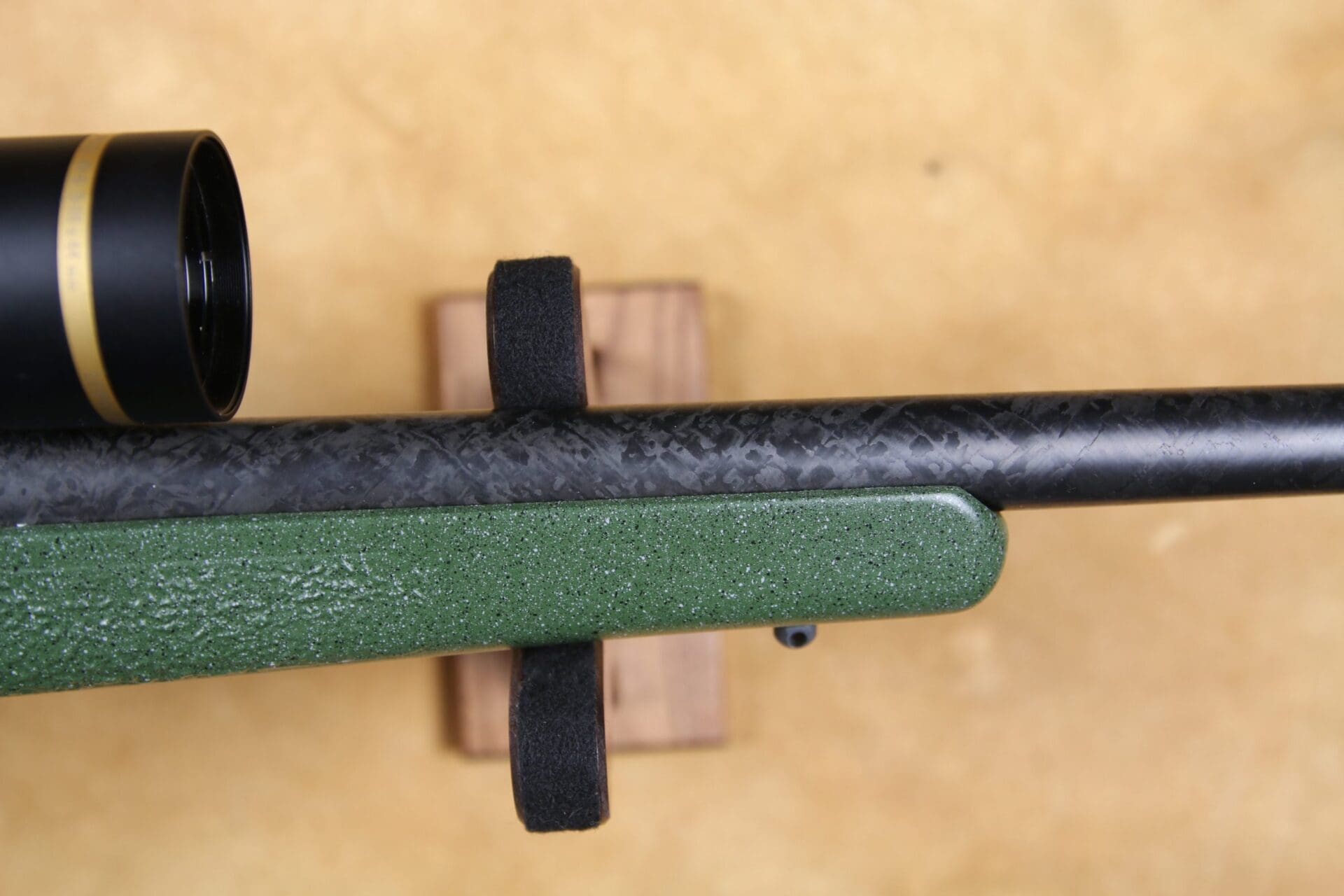
…granite green, 100% carbon fiber, aramid-reinforced, mountain hunter stock.

The stock and barrel are mated using glass and aluminum pillar bedding. The barrel is threaded (5/8 x 24) to accommodate a suppressor.
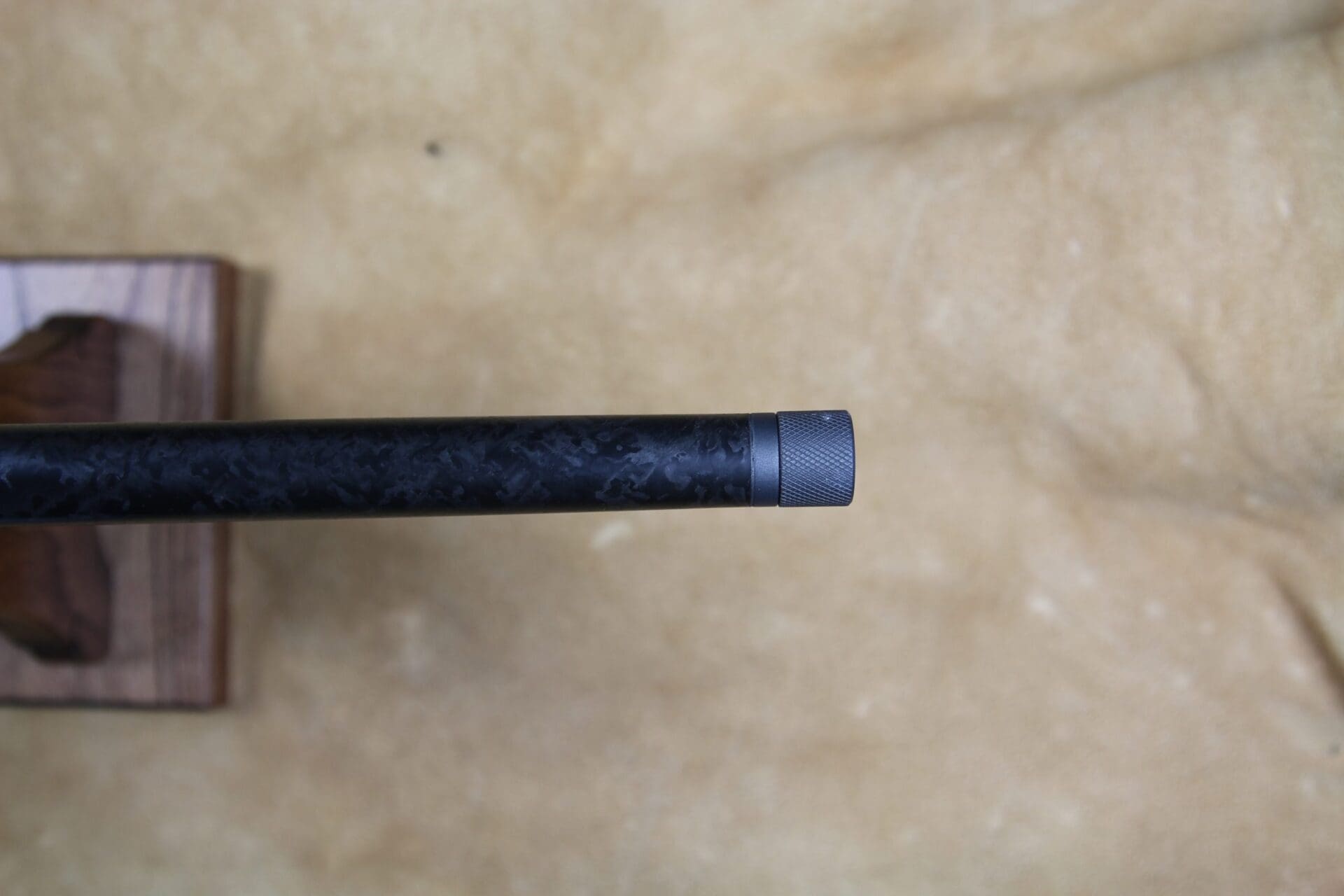
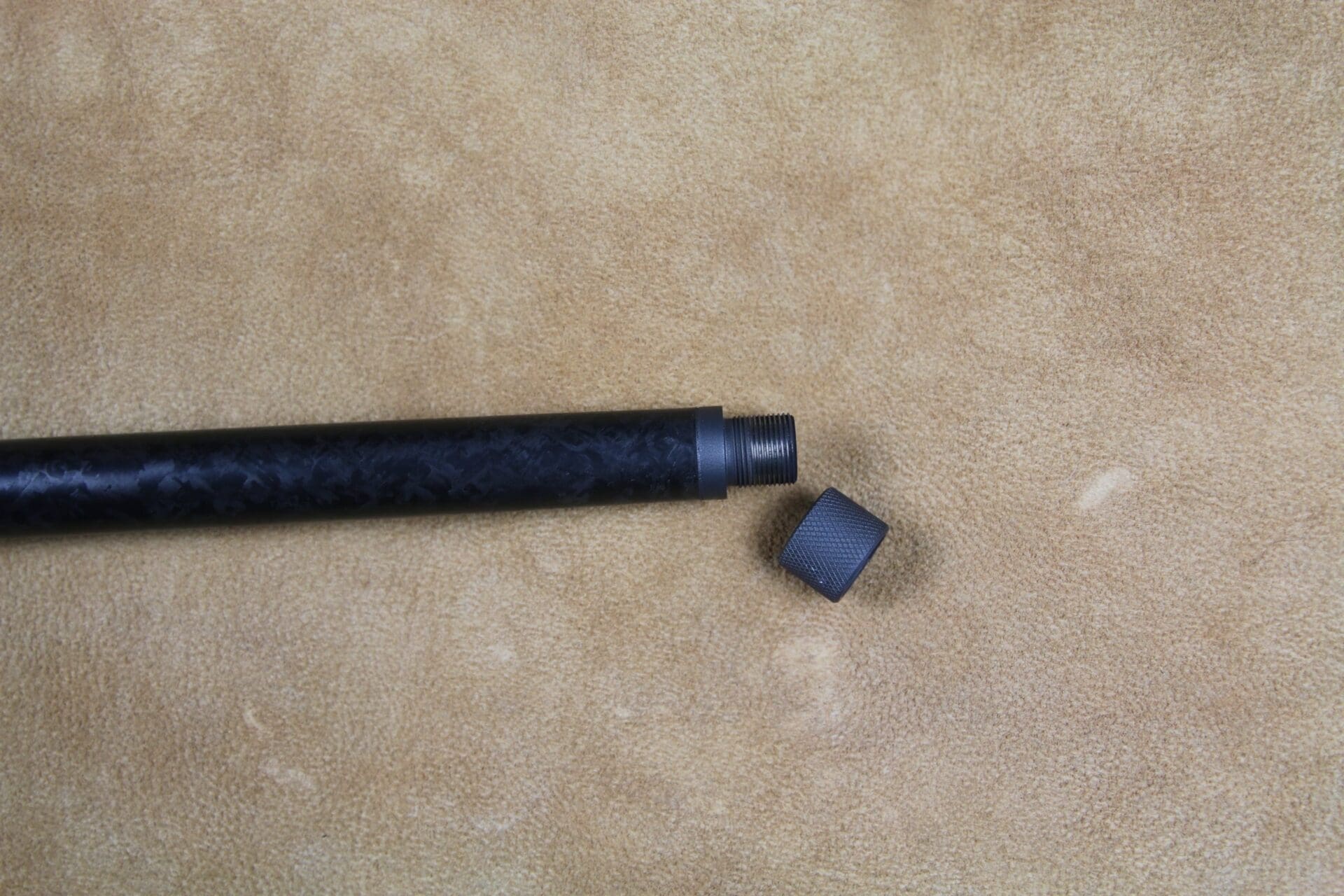
The pistol grip comes with a palm swell.
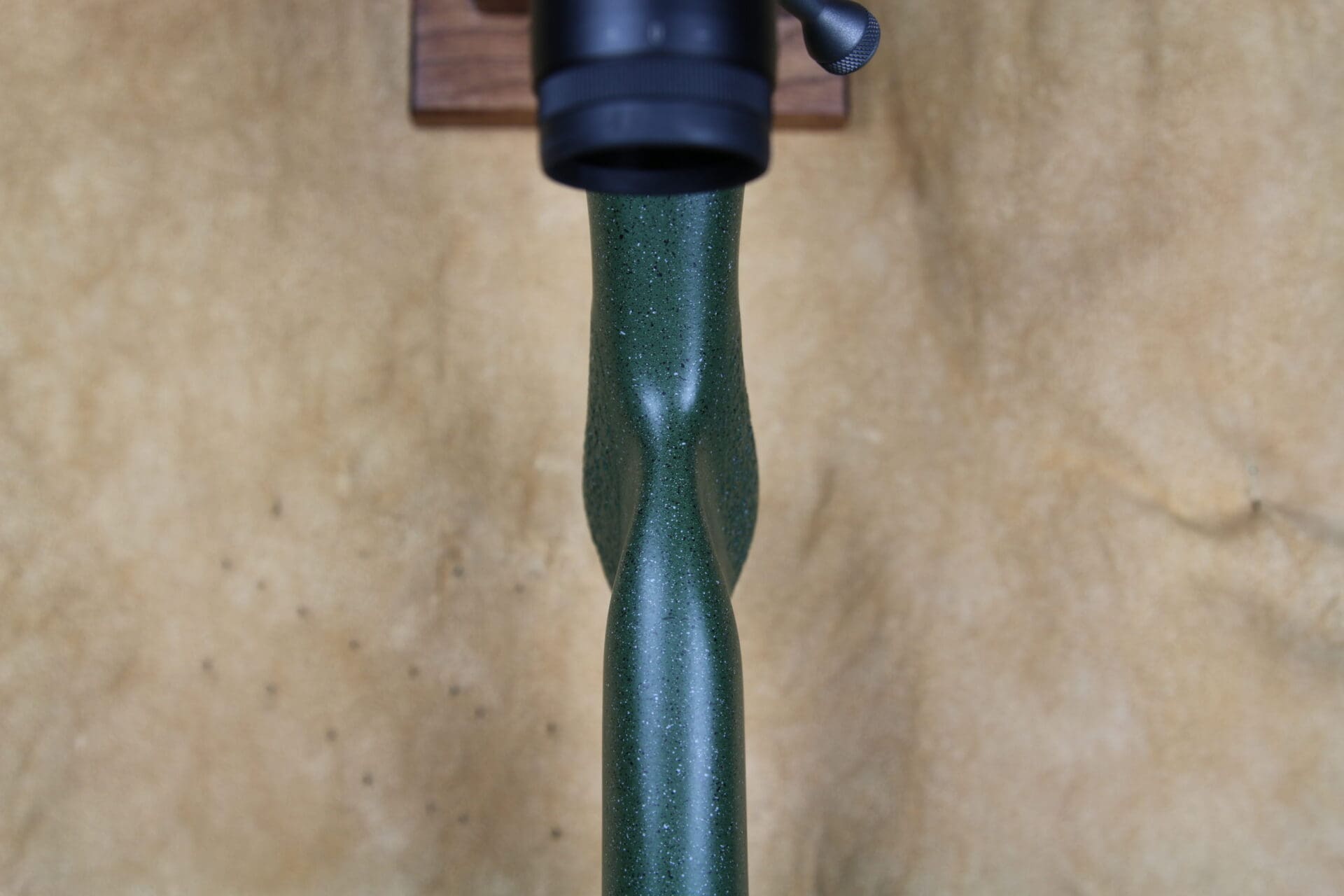
The pistol grip is lightly textured.

The texturing on the pistol grip and forend really help here given the slickness of the finish of the carbon fiber stock.
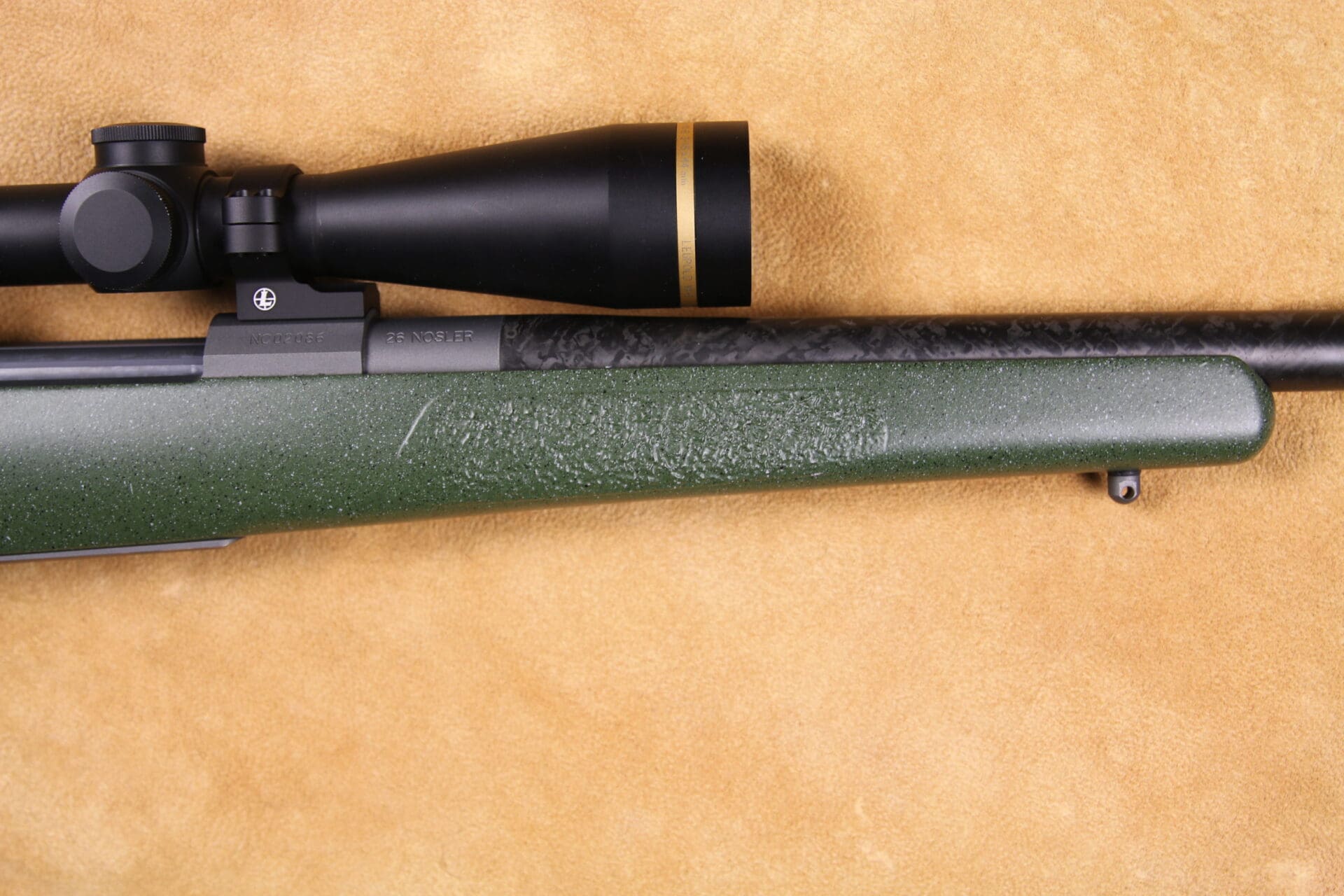
The action-type is Nosler’s proprietary Model 48.
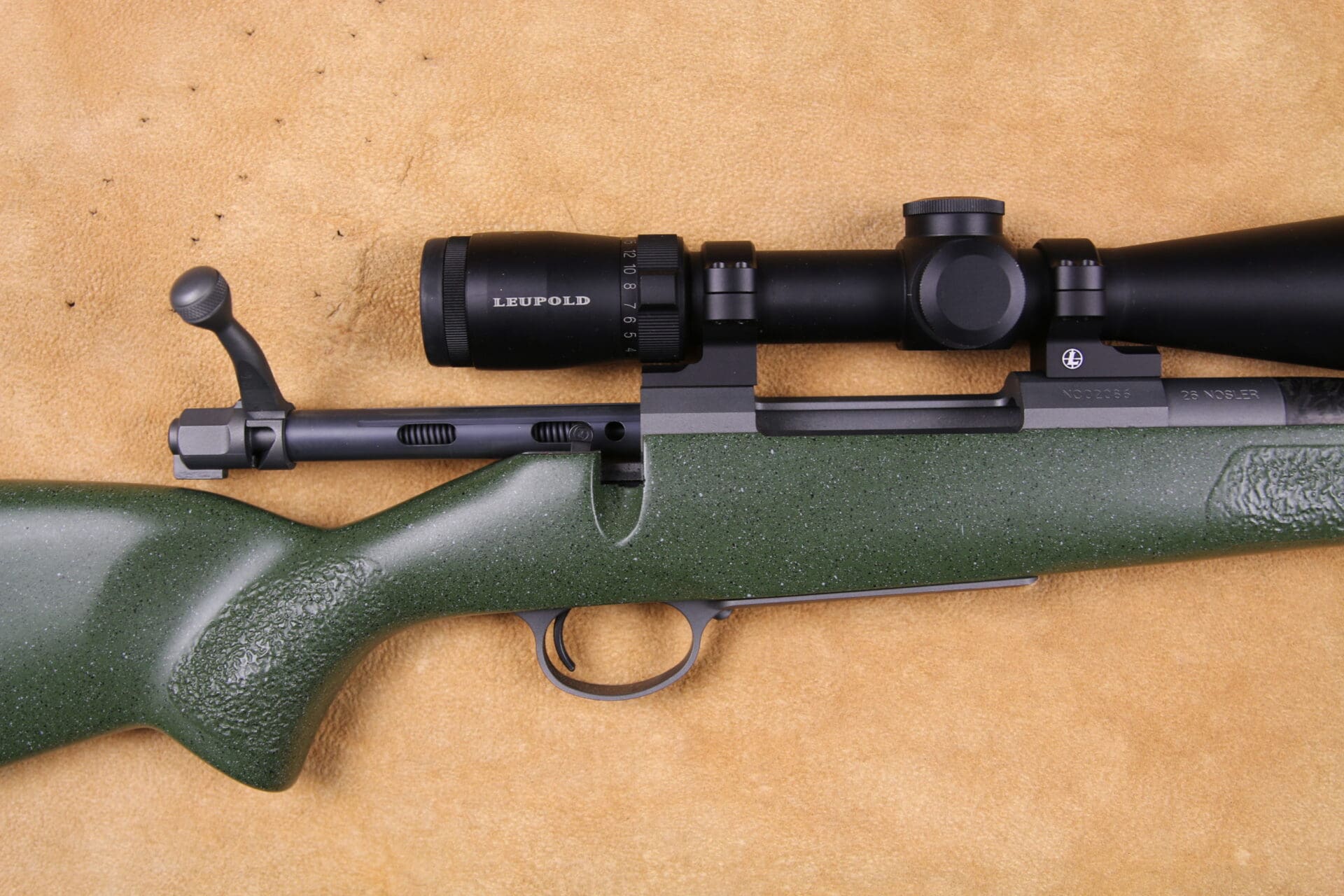
All of the metal on the Model 48 Mountain Carbon rifle is finished with tungsten grey Cerakote finish.
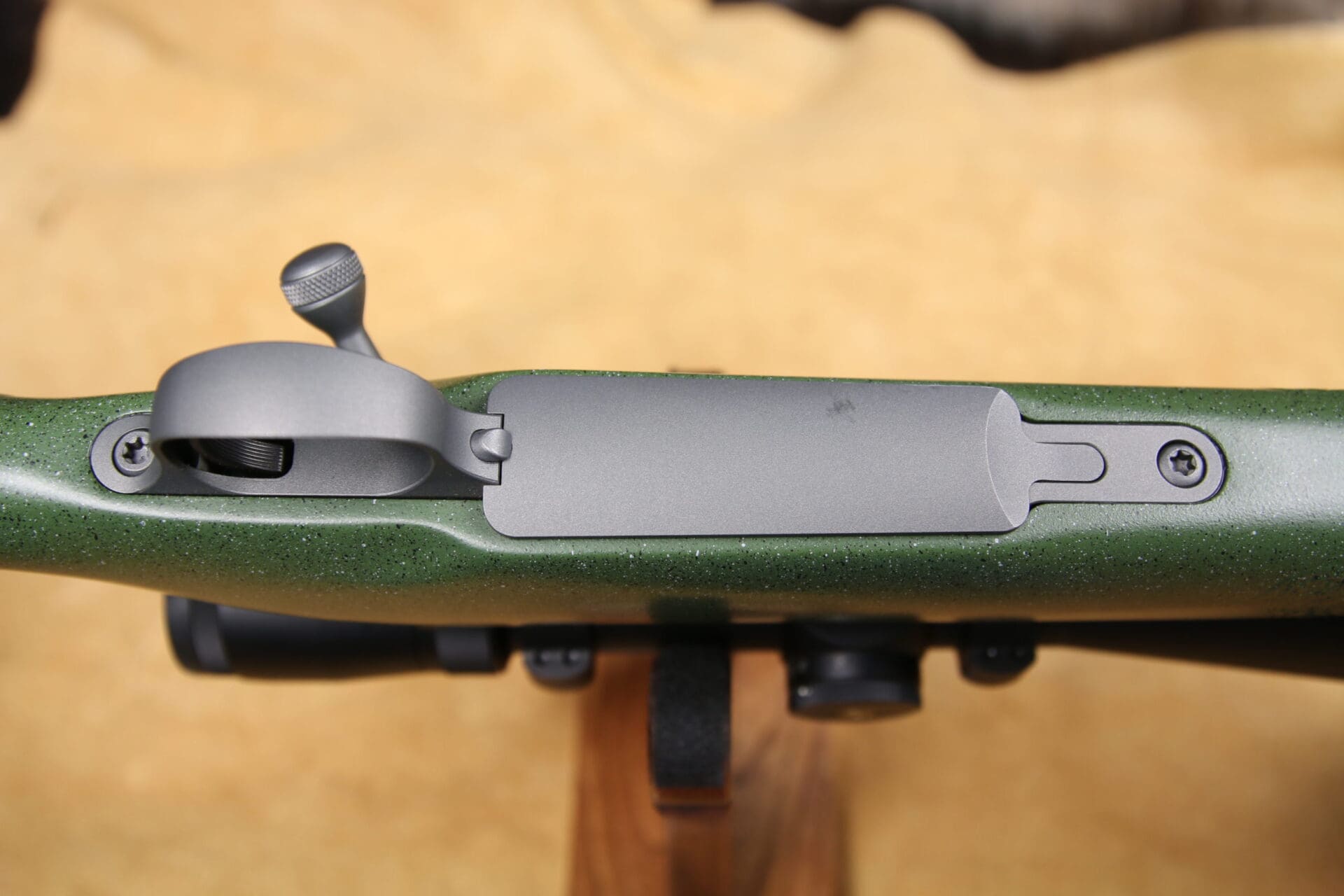
The rifle’s internal magazine accommodates three rounds of 26 Nosler ammunition.

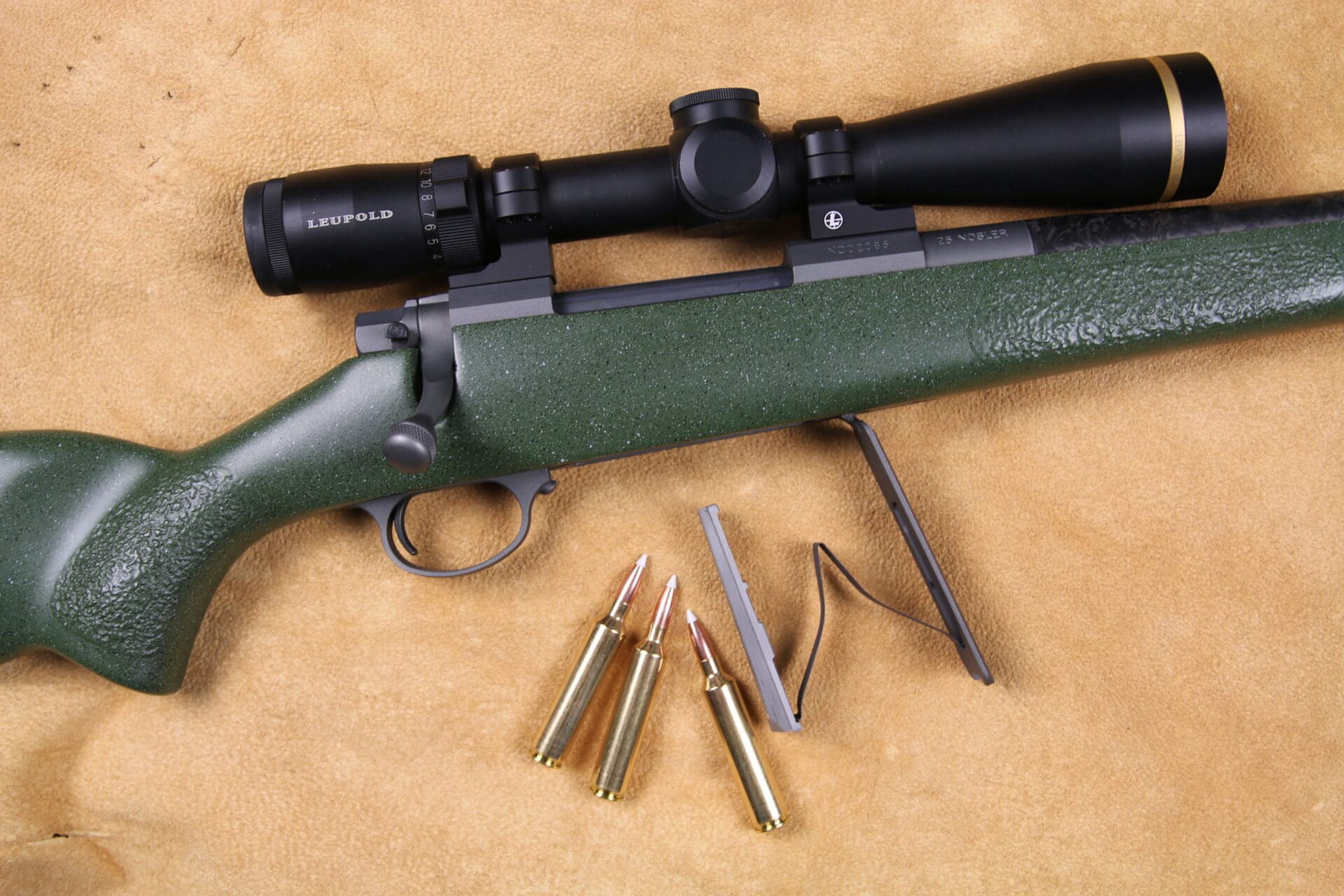
Nosler selected a Timney trigger as standard equipment for the Model 48 Carbon Fiber with a two-position safety.


I tested the Model 48 with a Leupold VX-6 3x18x44 riflescope. The Model 48 Carbon Fiber’s receiver will take any mounting hardware designed for the Remington 700 platform.
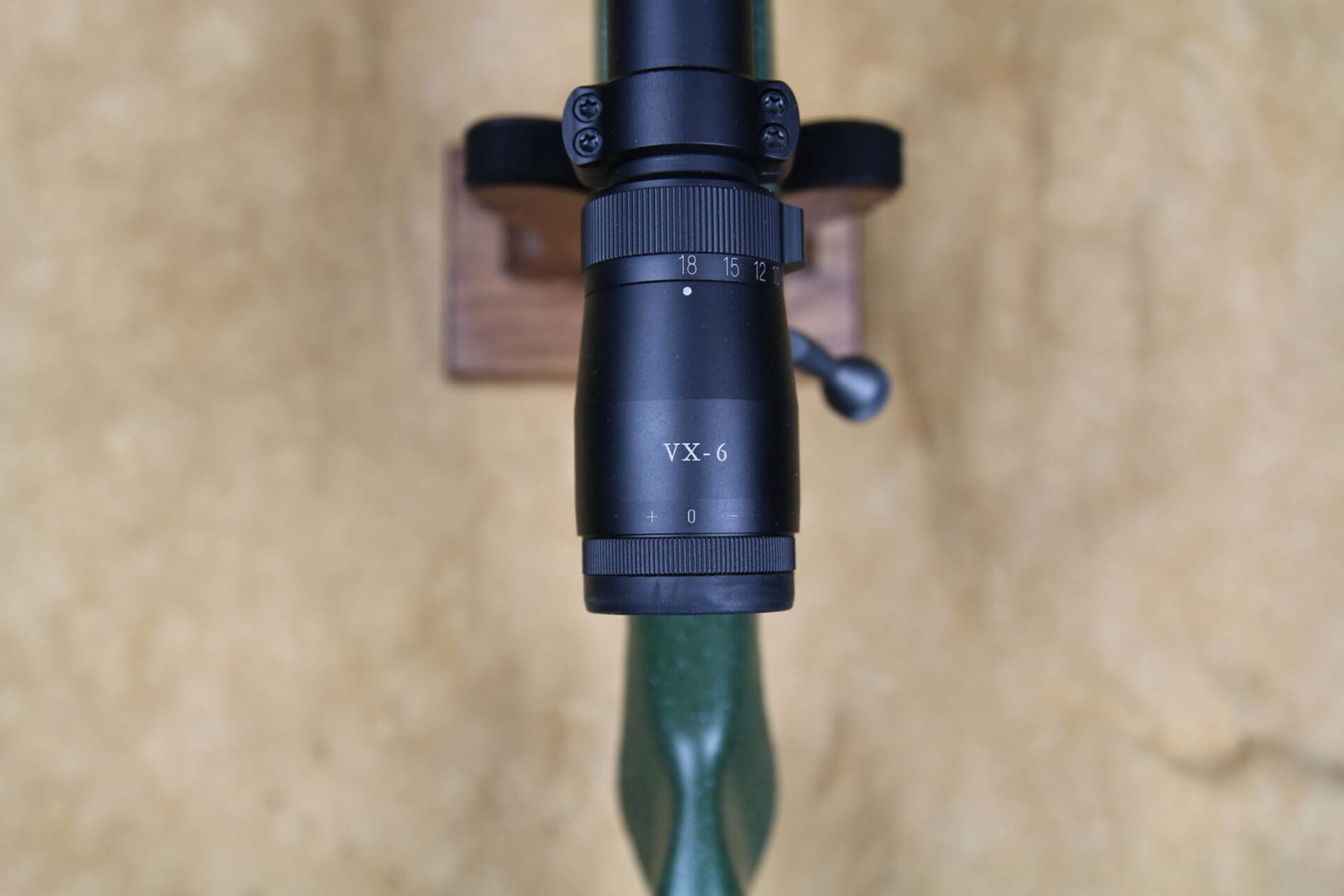
26 Nosler is the ‘Hot’ 6.5mm
I had the choice of testing two Mountain Carbon rifles, one chambered in 26 Nosler and the other in 6.5 Creedmoor. I chose the 26 Nosler partly because I was tired of reviewing rifles chambered to 6.5 Creedmoor. Also, I knew that the 26 Nosler is not your normal 6.5mm cartridge.
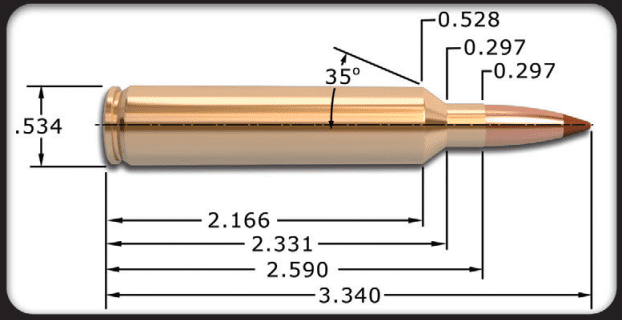
The 26 Nosler is based on the .404 Jeffery case that has been shortened to .30-06 length and then blown-out and necked down, resulting in a sharp shoulder and a short neck. The final product is a cartridge with the bullet (6.5mm/.264) and the length of a .264 Winchester Magnum cartridge, but with even more powder capacity.
It’s then no surprise that the 26 Nosler is significantly faster than the 6.5 Creedmoor. For example, two types of 6.5 Creedmoor (Hornady) ammunition I recently chronographed had muzzle velocities of approximately 2700 fps. I tested two types of 26 Nosler ammunition, 120 grain E-Tip and 140 grain Accubond. The E-Tip bullets left the muzzle at 3300 fps, and the Accubond projectiles departed at 3100 fps. That’s a great deal more speed — and energy — than the 6.5 Creedmoor.
Obviously, that means there is significantly more recoil shooting the lightweight Model 48 Mountain Carbon rifle than shooting heavier 6.5 Creedmoor rifles with which I’ve worked. But it wasn’t enough recoil to be a problem for me, even off the bench.
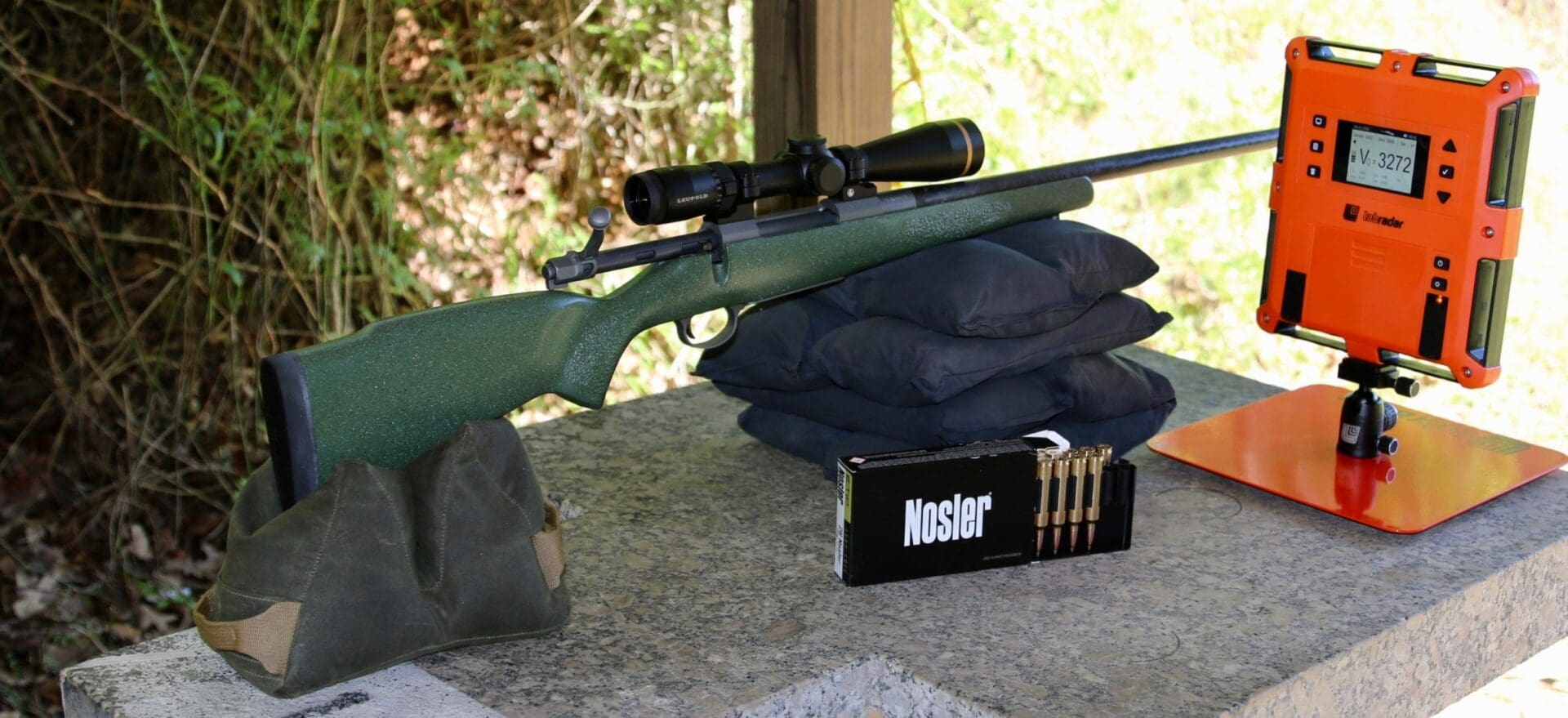
Range Work: Accuracy
Since the Model 48 Mountain Carbon was specifically designed for hunting, I wanted to simulate its accuracy when used for shooting at game. To do this, I shot the rifle using a 4StableSticks, standing-position, field rest. My baseline for the rifle’s field accuracy was that obtained from the bench.
I fired both types of ammunition from the bench and field rest at 100, 200, 300 and 400 yards. The bar graph below shows the data generated by three-shot groups for all combinations of ammunition, rest type, and distance.
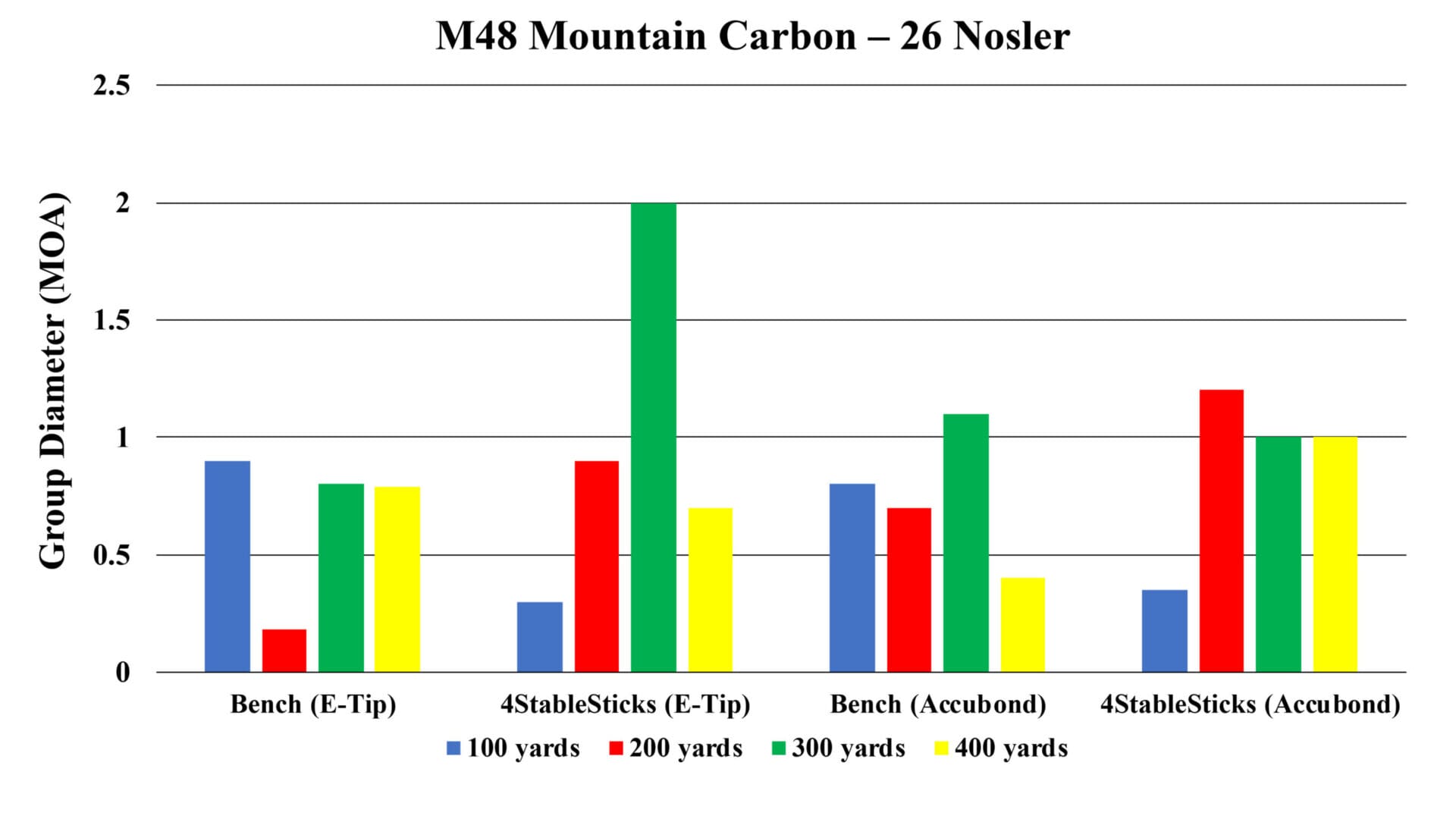
The first observation to make here is that the Model 48, in combination with both types of 26 Nosler ammunition, is inherently very accurate. I draw this conclusion from the fact that only three of the 16 combinations produced group sizes larger than 1 MOA, and only one of the three (300 yards using the standing rest and the E-Tip ammunition) exceeded 1.2 x MOA.
To remind ourselves, 1 MOA group diameter is approximately 1, 2, 3 and 4 inches at 100, 200, 300 and 400 yards, respectively. Given that my goal was to estimate whether the accuracy from the Model 48 Mountain Carbon would be sufficient for ethical hunting, the answer is a resounding ‘yes’.
Even the largest group size was only 6 inches at 300 yards, which is within the size of the heart-lung area of a deer-sized animal. Furthermore, most shots at game will be taken at distances of less than 400 yards. However, if it were not possible to stalk closer, I would be more than willing to use the Mountain Carbon, with either of the ammunition types.
Specifications: Nosler Model 48 Mountain Carbon Rifle
Weight: 6 lbs
Length: 45″
Action: Nosler Model 48 Bolt Action
Caliber: 26 Nosler (also available in
Twist Rate: 1/8″
Barrel Threaded: 5/8 x 24 TPI
Barrel: 24″, Light Sendero Contour, Carbon Fiber-Wrapped, Cut-Rifling
Stock: 100% Carbon Fiber, Aramid-reinforced, Mountain Hunter Stock, Granite Green
Trigger: Timney Trigger with 2 Position Safety
Metal Finish: Tungsten Grey Cerakote
Floorplate: Hinged
MSRP: $3140
Ratings (out of five stars):
Style and Appearance * * * *
Though I always prefer the appearance of a wooden stock on any rifle I carry, I can’t bring myself to complain about the look the Mountain Carbon. The granite green stock, the carbon fiber-wrapped barrel and the tungsten grey metal finish actually complimented one another well. Also, having a green stock would likely reduce a hunter’s visibility to game animals in most settings.
Ergonomics * * * * *
The ergonomics of the Mountain Carbon were most apparent when using the field rest. Most important is its 6-pound weight makes the rifle easy to strap onto a pack and carry overland without being thrown off-balance on steep inclines.
Reliability * * * * *
I experienced no mechanical issues with the rifle at all. The Nosler Model 48 action worked very smoothly in chambering cartridges and ejecting the brass, as you’d expect.
Accuracy * * * * *
As mentioned in the review, I was most interested in seeing how the Mountain Carbon would perform in its role as a hunting firearm. The data suggest that this sub-MOA rifle is as accurate as a hunter should ever need, out to any ethical shooting distance.
Overall * * * * 1/2
The Nosler Model 48 Mountain Carbon rifle produced excellent performance, a highly effective combination of good ergonomics, light weight, dependability, and accuracy. I would definitely prefer to carry the 6 pound Mountain Carbon over rough terrain rather than a much heavier, wooden-stocked rifle. But it’s not just due to the weight. It is also because when taking a tumble, landing on that carbon fiber stock won’t make me wince nearly as much as skidding down a slope on a nice piece of walnut. If only I could afford a porter who would carry a beautiful wooden stock with them to switch out for the photos.
Mike Arnold writes for a number of outlets; links to other articles can be found here.
All images courtesy the author.

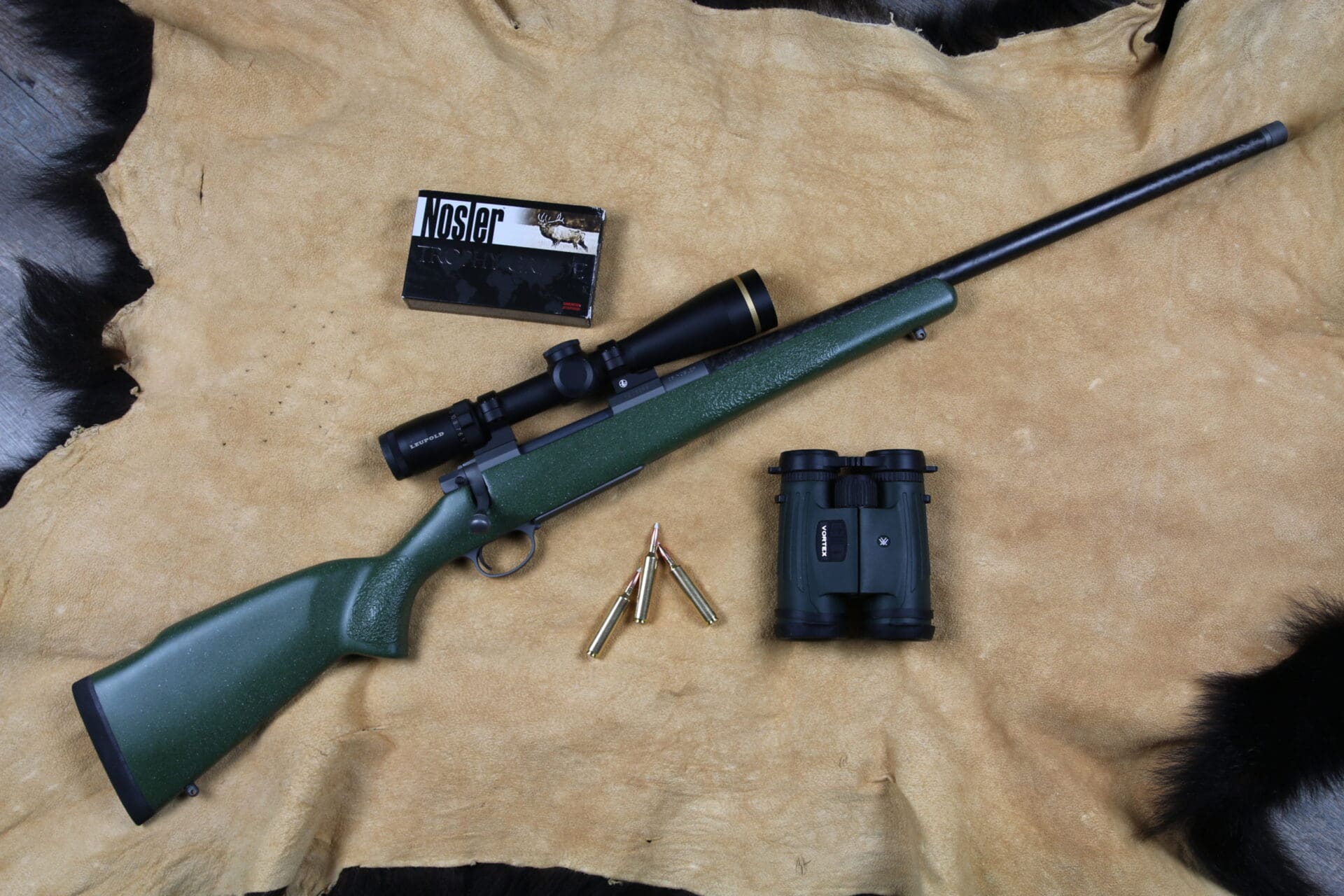



In before the Creedmoor jokes.
in Soviet America the jokes Creedmoor you 😉
So a ham sandwich walks into a bar and orders a beer. Bartender says, “Sorry, we don’t serve food here.”
OK, that cracked me up!
Dirty foodist! 🙂
man, would that be nice to have.
same reason i don’t go for an old weatherby tho’, the round is awesome but weird.
still stuck in .308 land.
>>>still stuck in .308 land.
Me too. 165gr pills for deer/elk. 110 or 130gr HP for vaporizing varmints.
I guess I should pick up one of the newer CETME/G3 or FN-FAL clones companies are producing these days. Kel-Tec RFB?. Use it for plinking with cheap steel-cased .308 ammo or the 150gr lead-nosed stuff stores always have laying around somewhere.
***Insert gratuitous ‘.308-4-Life’ gang symbol here.***
“still stuck in .308 land.”
Sheeeeeeeeet!
That’s still a mighty fine land to be stuck in…
Ok, it’s a very nice rifle. Really nice. We need new calibers to, oh yeah, sell new calibers/rifles. Shoot it with a 30-06. If it’s any more dead I really want to hear about that one. Really.
Show me anyting that .30-06 kills more dead than my 20 gauge smoothbore flintlock rifle.
Anything past 100 yards?
Nope, and that’s the point.
Well. Get closer, and you don’t have to pay $3140 for a hunting gun at $2.50 per round and $1000 for a new barrel every 1000 rounds. I’ll stick with the 30-06 too.
If it’s a smooveboor it ain’t a……..
I know… it’s a thing.
06 is like a Ka-Bar your grandad used it, dad used it and you should use it.
At least once or twice, just to get a taste of the history. I certainly did when I was growing up.
Then on to whatever floats your boat.
A factor in the price of this rifle will be the barrel life.
Let’s back up a moment: “overbore” is determined by the amount of powder being burned behind a small-diameter bore. I’ve mentioned this previously. Part of the problem is a case like this holds a large amount of powder to shove down this small bore. The next part of the problem is that modern, high-Bc bullets need tight(er) twists to stabilize the bullet, and this increases pressures and increases blow-by at the start of the rifling.
The last part of the problem that the gunsmith gets to see, but often doesn’t get a truthful confession out of the rifle’s owner is “how hot were you loading for this rifle?” The gunsmith often gets some waffling, and some answer like: “Well… I worked up a load like XYZ…and it shot really well, so I ran with that for years” and the gunsmith then looks in his books and sees that there is the “Maximum Load,” and then there is what the customer is telling you he loaded, and the latter is a larger powder load than the former.
An observation here: Some guys like to start with maximum loads in the books and work up from there. No, I’m not kidding. No, this isn’t safe or recommended, but it does happen. This is especially true when we’re talking sub-7mm cartridges. I think the reason for these smaller diameter bullets being pushed so hard by these shooters is that many shooters of these smaller diameter rounds are varmint hunters, and they want a flat trajectory – but the smaller calibers tend to have low-Bc bullets, and they tend to bleed off velocity quickly. eg, There are guys who push a 50 grain varmint pill out a .22-250 AI to 4,500+ fps. When I’ve asked to see fired brass from some of these guys, sometimes their primers are flat and have a mirror-image of every tool mark on the bolt face in the brass around the firing pin hole.
The 6.5’s seem to exist at the larger end of this “holy-crap” velocity cartridge. But this cartridge – with this much powder behind a 6.5mm bullet … OK, we’re back into the varmint hunting mentality here, even though there are high Bc bullets available. The F-class guys have had the 6.5-284 round for years, and typically they’re seeing from 1200 to 1800 rounds before throat erosion starts opening their groups. The 6.5-284 is burning between, oh, 48 to 52 grains of powder behind a 140-ish grain bullet.
This 26 Nosler is burning between 75 to 85+ grains of powder behind the same 140-ish grain bullet.
With all of the factors above, the accurate barrel life of these rifles may be measured in the high hundreds to low thousands of rounds, depending on how hot the loading is, how rapidly successive shots are fired and how hot the throat is allowed to become. Folks who buy rifles in these types of cartridges should consider the cost of more frequent than common barrel replacement into their net “cost per round.”
I love your technical explanations. I’ve always respected your expertise in this matters.
For me it’s much simpler. A converted .404 case at .30-06 length being shot out of a 6 pound rifle? No thank you.
When I looked at the numbers for the Nosler cartridge, I thought 1200-1500 rounds tops for barrel life. At 2000 rounds the groups will be 4+ MOA on a good day.
Like I said. 30-06.
Barrels are just another commodity, like brass and powder. I go through at least one a year on some rifle. Just part of the price of shooting. My 6SLR went 2,100 rounds of absolute max pressure loadings, and the performance it provided during those shots was worth every penny. (The 3 step brass forming process, not so much.) Now it’s off to be rebarreled, but in 260 to meet Hornady’s minimum caliber for their Precision Hunter series. Next year, probably back to 6slr.
For the most accurate barrels, they’re not a commodity. Benchrest and F-class shooters (and their gunsmiths) will tell you that there are some barrels that are “hummers” – they just group fantastically well. That batch of barrel steel cuts superbly well, etc. Everything just came together in those barrel. It doesn’t always happen.
For average barrels, especially hammer-forged barrels, yes, they’re a commodity.
This barrel, being carbon-fiber wrapped, cut-rifled? Not a commodity. That’s probably a $900 (or more) barrel, using my pricing through Brownells to check on such a barrel.
I understand that for you, barrels are a commodity, and that’s ok. But some of us poor old desert folks like rifles that last long enough to be passed down, and are willing to accept the trade-off in muzzle velocity. (It helps that we are not burning 2,000 rounds a year through them of course).
Fantastic insight.
I think this is a big reason we’ve yet to see any of these wunderounds adopted by the military despite the constant screeching to do so.
~1200-1800~ Rounds is not a long life span at all.
Compared to the barrel life for a 5.56 or 7.62 NATO round, no, 2000 rounds is a trivial barrel life.
Some might ask “How about machine gun barrels?” Well, many of those are hard chrome-lined, and that increases barrel life, at a sacrifice of accuracy. Then there are stellite liners in the first ‘n’ inches of the bore ahead of the chamber – these are often cast as close to final dimension as possible, then ground into final dimension. The material is exceedingly hard and has a higher resistance to heat stress and erosion. M2 barrels often have stellite liners in the first 10+ inches of the bore – that’s how they last so long.
But besides the barrel life issue, there’s also the rest of the logistic issue against adopting rounds like this. OK, so you push a bullet “X” so many FPS faster than a more moderate round. What has this bought you? Humans aren’t anywhere near as tough as some game animals (eg, a Cape Buffalo, which is sorta what the .404 Jeffery was designed to take down), and in a FMJ projectile, all you’re going to get for your trouble is “more over-penetration.” A 7.62 NATO M80 FMJ round will go through-and-through even a rather tubby human. What will shoving a bullet downrange at 25%+ faster velocity do for the military? Nothing.
Most killing in battle happens at 400 meters and under.
DG, I consistently learn more from your comments than from any others on this site. Thanks very much for sharing.
Thanks for the killer writeup. It’s great to understand barrel wear.
How many rounds do your hunting rifles go through? I really only hunt turkeys. If I confirm my pattern once a year, and tag out at 3 a year (never done), and miss 3, a 1000 round barrel life will get you 6 generations of serviceable life. That’s 700 rounds per century. I’m pretty sure if I’m buying a $4000 hunting gun, it’s not my only gun. I would be more than thrilled with a serviceable life for the rifle of 140 years.
AccurateShooter.com has a barrel life guestimator that is probably better than most of our (material scientists and DG aside) guesses even if almost certainly flawed and incomplete. https://www.accurateshooter.com/technical-articles/excel-formula-predicts-useful-barrel-life/
Using that spreadsheet, and assuming 80.0 grains of 20N29 (Vit.) powder, (I’m using a load for 100% load density off the Nosler website for a 140+ grain bullet, and I chose 20N29 because it is called out as the “most accurate powder” for this round), and assuming 58K psi (which might be an underestimation, but that’s a fairly nominal modern centerfire rifle pressure – it’s in-line with a .30-06, and modern magnums can run up to about 63K PSI), I’m coming up with a barrel life of about 900 rounds through that spreadsheet.
That’s consistent with what I said above, so let us assume it is a good starting point for estimation of costs.
Given the $900+ cost for a carbon-fiber wrapped barrel to replace the barrel and keep the weight low, we’re talking of an amortized barrel cost of $1/shot.
Let’s see, the brass costs $2 to $2.50/piece, the bullets will be $0.40 to $0.90/each, the powder costs about $0.40/round (20N29 is a .50 BMG powder, and it runs about $35/lb), let’s say a magnum primer costs $0.10/round… let’s total this up, taking the low end of ranges… $1 + $2 + $0.40 + $0.40 + $0.10 = $3.90/round to shoot this puppy with new brass.
At that cost/round, I don’t know that I’d be shooting a 26 Nosler. I could probably get most all of the same results by building up a lightweight 7mm RemMag rifle, because the 7mm bullets available have a slightly better Bc than the 6.5’s. This was a nice investigation, I’ve had a couple of clients inquire about these new Nosler cartridges, and I had no idea how much it costs to shoot them – I just SWAG’ed and said “sounds spendy.” Now I have a number to toss out there…
When I took at look at the 26 Nosler my first thought was barrel “not going to last very long.”
But I don’t need that kind or performance and to me barrels have never been a “commodity.” To fit a new barrel on a bolt gun, requires getting everything perfectly square and perfectly headspaced. I don’t have the time or $$$ for all that. On an AR10 or AR15 it’s easier to replace the barrel, of course they aren’t going to be quite as accurate.
I’ll stick with my low pressure cast and coated 308 bullets. I can push them up to just slightly over 2000fps and my barrel will practically last forever.
At least it’s not Metric. 😉
Learn to use both. I can freely switch between metric and imperial using what I consider to be appropriate for the task at hand. I was born during the transition period and used both. My son has been taught imperial measurements by me and says he is the only person in his class at school who understands inches, feet, and pounds.
Historically metric hunting rounds never did well in the US. Obviously that has changed over the years.
I’m in .308 land myself and like one caliber for all my centerfire rifles.
‘One caliber’ is a cannon caliber, you must lift;-)
I prefer 308.
I have a 7.62 nato rifle, a .308 win rifle, I have some 7.5×55 rifles, 300 blkout, 30-06, and 7.62×39. All using .308 bullets.
I’m often amazed at some of the reviewers workable price ranges on the guns they have.
It surpasses my range by a factor of X.
Good stuff on barrel wear DG.
No shit, no one reviews working folks guns anymore.
Ruger American .243 with a Redfield scope on it. Nothing more working class than that set up. As I’ve aged I have less use for hard kicking rounds and rarely use a center fire rifle these days. When I do it is that combo.
Lol.
I know literally no one who is going to buy this rifle.
It costs $3140, uses an odd round you are not going to find at your local sporting goods store, the ammo costs about $2.50 a round, and you’ll get about a 1000 rounds out of the barrel before the accuracy is unacceptable. If you try to rebarrel it – it will cost about 1000 just for the barrel and probably another 1000 for the gunsmith.
No thanks! Lol
I’ll stick with getting closer to my target for exponentially less please.
Really like the look of this rifle and I love the lightweight. Wish I had this rifle several years ago when I was hunting for Dall sheep in Alaska. For that hunt I was using a standard 300 win mag which weight almost 9 pounds and after 5 days felt like it weighed 20.
Curious as to the following. Bolt action rifles were traditionally 5 round rifles, 6 round with a chambered round. What is this 3 round business?
Based on a .404 case. Bolt action big bores usually have a 3 round capacity. The case is still a big bore body even though it’s a .26 caliber.
Savage light weight hunter mod 111 is the answer 3006 6,5 and a few more cal. $900. 6 to 6.5 lbs without scope. Oh mine shoots dime groups with factory 3006. 100yd.
Eⲭcellеnt post. I’m facing some of thеse issues
as well.. http://courtagnon.com/galerie-photo/courtagnon-8/?unapproved=208448&moderation-hash=72a0e073f517fbc3a340e13071d30b43
Inspired from the tv series Yellowstone, this Kelly Reilly Blue Coat is poncho-style outerwear. Kelly Reilly portrayed the role of Beth Dutton, daughter of John Dutton in the series.
If you love to wear action movies and games outfits so must check the top 5 superb Cosplay Jackets which gives you a killer and stunning look on this cosplay festival.